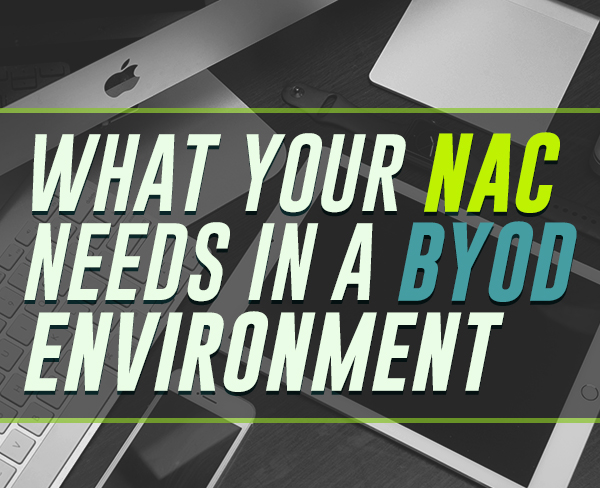With the growing popularity of cloud computing, more and more people are leveraging the mobility that it offers them. Now, employees have better freedom in accessing their office files across multiple devices. This brought forth a trend called Bring Your Own Device or BYOD, which drastically transformed the way employees work, and how organizations manage their network security.
In a BYOD environment, both employee-owned and corporate-owned devices are connected to the network. With this setup, no longer does the IT department have a full control of all endpoints accessing the network. Hence, security risks abound. Your old Network Access Control NAC is not relevant and capable anymore. But with the following solutions integrated in your NAC, you can get a better grip on your network security.
5 Things Your NAC Needs to Manage a BYOD Environment
1) Greater Visibility and Centralized Policy Management – An advanced NAC for a BYOD environment has the capacity to see all users from a single console. As visibility is key to a secured network, there must be a centralized policy management that will oversee the access control of each device. An organization must identify and control the access policies of all network infrastructure gear including personal devices.
2) Granular Access Policies – After having such visibility, it is important to impose more granular access policies to ensure optimum security.
First, the network administrator must do a detailed profiling of all devices, identify its type, the owners and where they are connected to. Then, the implementation of access policies must be automated before any connection takes place.
The network administrators must define the type of access control it must give to a device and user; identify the applications they can access and even the duration they are allowed for the access. The type of permission or restriction depends on the type of device used, the place where it is connected from and the owner.
3) Flexibility and Scalability to Support the Growing Number of Devices– An advanced NAC solution must be scalable enough to support a sudden growth in the number of users. Scalability is important so the organisation can cater to all devices or users that needed access without resorting to costly upgrades and even costly downtime. On the other hand, flexibility is important to support all connection sources all throughout the network.
4) Data Analytics – An NAC that manages a BYOD environment must keep track of each network data generated and analyze the statistics. This is important for planning an upgrade, troubleshooting problems and revamping the NAC solution itself for a more efficient management. Data analytics is also important to provide better mobile device support and keeping up with regulatory requirements.
5) Integration with other security solutions – Lastly, integration is important to enhance the existing network security and make the management of BYOD environment easier. NAC solution should integrate with complementary security solutions such as Mobile Device Management (MDM) Solution to eliminate risks and optimize security. In a viable and safe BYOD environment, NAC and MDM should work together in managing external devices and in deciding which type of network access will be provided.
About the Author, Micah de Jesus
Micah de Jesus is a Digital Marketing Professional and a data / cybersecurity news junkie. She works as the Managing Director of GrowthScout SEO, a digital marketing firm and a Contributing Editor for INOC – NOC Center, The Partnership UK, Turrem Data and Solus Multi Factor Authentication.



